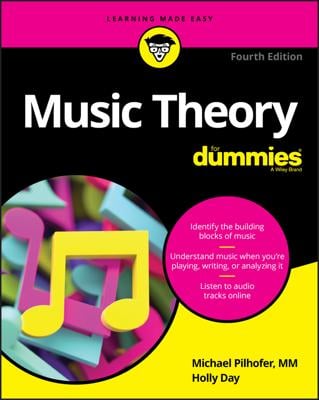These ten questions attempt to answer all those burning questions you have about music theory, including why it’s important to musical studies and what it can help you accomplish as a musician.
Why is music theory important?
Music theory helps people better understand music. The more you know about music theory, the better your comprehension of music, and the better you will play and compose. It’s like learning to read and write: These skills can help you communicate better.
If I can already play some music without knowing music theory, why bother learning it?
Plenty of people in the world can’t read or write, yet they can still communicate their thoughts and feelings verbally. And, similarly, many intuitive, self-taught musicians have never learned to read or write music. Music theory can help musicians learn new techniques and new styles that they would never stumble upon on their own.
Why is so much music theory centered on the piano keyboard?
A keyboard instrument, such as the piano, has several advantages over other instruments. Here they are:
Everything you need is right there. The main advantage of a keyboard instrument is that the tuning of the keyboard is such that the ascending and descending notes are laid out right in front of you in a no-nonsense straight line.
From the first try at playing, anyone can make musical noise on a keyboard. With a keyboard there’s no practicing with a bow and no learning how to properly blow over or into a mouthpiece.
A keyboard has a huge range. No limit exists to how many octaves you can pile on a keyboard.
Is there a quick and easy way to learn to read music?
All first-year music students are given a couple of cheesy mnemonics to help them memorize the lines and spaces of the treble and bass clefs.
Treble clef (from bottom to top of staff)
Notes on the lines: Every Good Boy Deserves Fudge (EGBDF).
Notes on the spaces: FACE. That’s it — everyone uses this one.
Bass clef (from bottom to top of staff)
Notes on the lines: Go Buy Donuts For Alan (GBDFA).
Notes on the spaces: All Cows Eat Grass (ACEG).
How do I identify a key based on the key signature?
If you know whether a piece of music is written in a major or minor key, you’re on your way to determining the key. Here are some quick rules:
If the key signature has no sharps or flats, the piece is in C major (or A minor).
If the key signature has one flat, the piece is in F major (or D minor).
If the key signature has more than one flat, the piece is written in the key of the next-to-last flat in the key signature.
If the key signature has sharps, take the note of the last sharp and go up one note (changing the letter name). If the last sharp is D sharp, the key is E. If it’s F sharp, the key is G.
The relative minor of a key is a minor third down from the major. So when you move three adjacent keys, black or white, to the left — or three frets up the guitar neck — you land on the relative minor.
Can I transpose a piece of music into another key?
To transpose a piece of music into another key, you can simply move every note in the piece up or down by the same interval. Another way to transpose a song is to learn the scale degrees of the original piece of music, and then play those same scale degrees in the new key.
Will learning music theory hinder my ability to improvise?
Learning proper grammar didn’t keep you from using slang or swearing, did it? Seriously, though, understanding the basics of music theory, especially chord progressions and scale degrees, will make playing with other musicians and improvising that much easier.
Do I need to know theory if I just play drums?
A lot of drummers, especially early on, take their role of being drummer to mean that they determine and keep the beat and that everyone else is following their lead. A really good drummer, however, realizes that he’s also a part of the band. He acknowledges that in order to play with everyone else, he needs to know how time signatures and note values work and how to use tempo and dynamics to best fit each individual song just as much as everyone else in the band.
Where do the 12 musical notes come from?
Many theories abound regarding the origin of the 12 notes used in music today. Some people think their origin is in math. The number 12 is easily divisible by the numbers 2, 3, and 4, which makes for an easy division of the tones between an octave.
Other theorists say that Pythagoras, a Greek from the island of Samos, had a cultural reverence for the number 12 and, therefore, made his version of the Circle of Fifths with 12 points on it.
If composers had strictly used the solfège model and abandoned Pythagoras’s Circle of Fifths, today’s model would have nine points on it instead. The best answer to the question of the notes’ origin, however, is from Schoenberg, who said a scale had 12 notes simply because 1 plus 2 equals 3. Many non-Western cultures have more or fewer pitches in their musical systems.
How does knowing theory help me memorize a piece of music?
If you know scales, chords, and intervals, you can apply all this information to whatever piece of music you’re learning to play. When you understand the form and compositional techniques used in a piece, it simplifies what you need to memorize for performances. Knowing how a musical piece is constructed makes it easier to anticipate what needs to come next in a piece.

